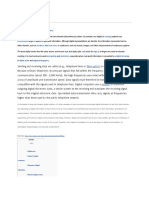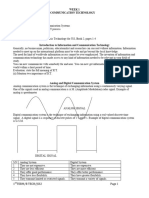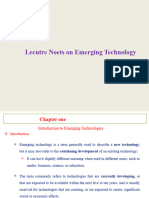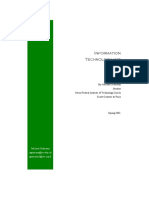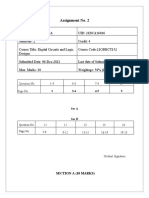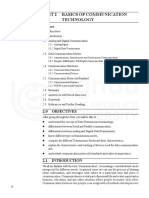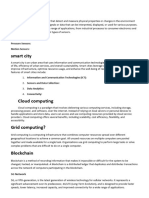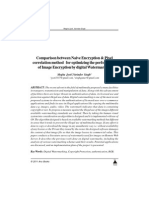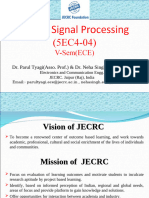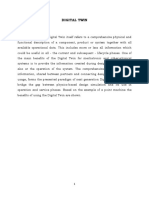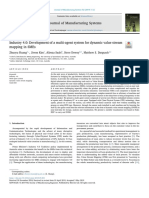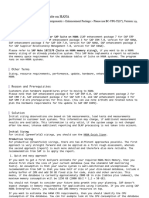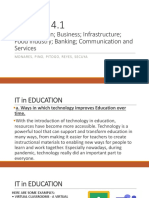0 ratings0% found this document useful (0 votes)
12 viewsSection 1.1 What Is Digital Society (MS)
Section 1.1 What Is Digital Society (MS)
Uploaded by
arnel.avilaDigital Society Section 1.1
Question Paper
Mark scheme
Copyright:
© All Rights Reserved
Available Formats
Download as DOCX, PDF, TXT or read online from Scribd
Section 1.1 What Is Digital Society (MS)
Section 1.1 What Is Digital Society (MS)
Uploaded by
arnel.avila0 ratings0% found this document useful (0 votes)
12 views2 pagesDigital Society Section 1.1
Question Paper
Mark scheme
Original Title
Section 1.1 What is Digital Society (MS)
Copyright
© © All Rights Reserved
Available Formats
DOCX, PDF, TXT or read online from Scribd
Share this document
Did you find this document useful?
Is this content inappropriate?
Digital Society Section 1.1
Question Paper
Mark scheme
Copyright:
© All Rights Reserved
Available Formats
Download as DOCX, PDF, TXT or read online from Scribd
Download as docx, pdf, or txt
0 ratings0% found this document useful (0 votes)
12 views2 pagesSection 1.1 What Is Digital Society (MS)
Section 1.1 What Is Digital Society (MS)
Uploaded by
arnel.avilaDigital Society Section 1.1
Question Paper
Mark scheme
Copyright:
© All Rights Reserved
Available Formats
Download as DOCX, PDF, TXT or read online from Scribd
Download as docx, pdf, or txt
You are on page 1of 2
Section 1.1 What is Digital Society?
Carefully read and answer all the following questions.
1. Define the term ‘digital revolution’ as used in the context of
digital society. [1]
Possible Answer: The digital revolution refers to the advancement of
technology from analogue electronic and mechanical devices to digital
technologies.
Mark Scheme: 1 mark for accurately defining the term.
2. Identify two digital technologies that have had significant
impacts during the digital revolution.
Possible Answer: Personal computers and the internet.
Mark Scheme: 1 mark for each correct technology identified. (2 marks
total)
Describe the concept of ‘digital divide’ and its implications in
society.
Possible Answer: The digital divide refers to the gaps between
members of society who have uneven access to computers or the
internet and those who do. This divide can create significant disparities in
access to economic, political, and social resources, disadvantaging
certain groups such as the economically disadvantaged, those in rural
areas, older individuals, and non-native language speakers.
Mark Scheme: 1-2 marks for a basic description; 3 marks for a detailed
account that includes implications.
Outline the difference between ‘digitization’ and ‘digitalization.’
Possible Answer: Digitization refers to the process of converting
analogue information into digital format. Digitalization refers to the use of
digital systems to change the structure or operation of a business,
institution, or organization.
Mark Scheme: 1 mark for correctly defining each term, 1 additional
mark for clearly outlining the difference. (3 marks total)
State one reason why the term ‘fourth industrial revolution’ might
be confusing when discussing digital systems.
Possible Answer: It can be confusing because the term ‘fourth
industrial revolution’ is different from the ‘fourth generation in
computing,’ even though both refer to developments in digital systems.
Mark Scheme: 1 mark for stating a correct reason.
Define ‘steganography’ as used in the context of digital
technologies.
Possible Answer: Steganography is the practice of hiding secret text
within an image file, making the text invisible while the image appears
unchanged.
Mark Scheme: 1 mark for a precise definition.
Identify one legitimate purpose of using steganography.
Possible Answer: Watermarking images for copyright protection.
Mark Scheme: 1 mark for correctly identifying a legitimate purpose.
Describe one way in which digital preservation differs from
digitization.
Possible Answer: Digital preservation involves ensuring that digital
content remains accessible and usable over time, despite technological
changes, whereas digitization is simply converting analogue information
into digital format.
Mark Scheme: 1-2 marks for a basic description; 3 marks for a clear
distinction between the two concepts.
Outline the significance of the binary number system in digital
systems.
Possible Answer: The binary number system is fundamental to digital
systems because all data and information, including text, images, and
software, are represented as sequences of 1s and 0s.
Mark Scheme: 1 mark for mentioning the binary system, 1 additional
mark for explaining its significance in digital systems. (2 marks total)
State the difference between analogue and digital signals.
Possible Answer: Analogue signals are continuous and represented by
waves, used for audio and video transmissions. Digital signals are
discrete, represented by 1s and 0s, and allow data transmission between
digital devices.
Mark Scheme: 1 mark for correctly stating the difference between
analogue and digital signals.
You might also like
- Grade 7 Sectors of ICT and Its Career and Business Opportunities (Part 1) - MATATAG CURRICULUMDocument36 pagesGrade 7 Sectors of ICT and Its Career and Business Opportunities (Part 1) - MATATAG CURRICULUMMiss Beb100% (23)
- Electronic Display Board Real ProjectDocument17 pagesElectronic Display Board Real ProjectEkoja Mishel Pink100% (2)
- DhimanDocument10 pagesDhimanSanjay DhimanNo ratings yet
- Digital Systems and Binary NumbersDocument3 pagesDigital Systems and Binary NumbersSathya NarayananNo ratings yet
- 1.introduction To Digital CommunicationDocument7 pages1.introduction To Digital Communicationhamza mohsenNo ratings yet
- Digital Logic DesignDocument159 pagesDigital Logic DesignAFJAL HOSSAINNo ratings yet
- Intro - To ComputerDocument57 pagesIntro - To ComputerBrhane WeldegebrialNo ratings yet
- Digital System ArchitectureDocument16 pagesDigital System ArchitectureEliasNo ratings yet
- Symbol To Digital Conversion: FingerDocument4 pagesSymbol To Digital Conversion: FingerAditya JainNo ratings yet
- IT441 Assignment 1Document7 pagesIT441 Assignment 1Twiif AliNo ratings yet
- Switching Theory and Logic Design PDFDocument159 pagesSwitching Theory and Logic Design PDFSai TejaswiniNo ratings yet
- ch01 - Data CommunicationDocument30 pagesch01 - Data CommunicationmrbeeeNo ratings yet
- DSP 20 Chapter 1Document5 pagesDSP 20 Chapter 1Francisco GOMEZ MARTINNo ratings yet
- STLD NotesDocument159 pagesSTLD NotesanithaNo ratings yet
- LIVING IN THE IT ERA Module MidtermDocument20 pagesLIVING IN THE IT ERA Module MidtermJerwin TaguinodNo ratings yet
- UNIT - 1 IntroductionDocument40 pagesUNIT - 1 Introductionhusnasyeda448No ratings yet
- Basic TechnologyDocument21 pagesBasic Technologyajetunmobi ayodejiNo ratings yet
- Assignment1 DIGDES1 IAC1 2022ADocument2 pagesAssignment1 DIGDES1 IAC1 2022AERYNTH EILINGERNo ratings yet
- Emerging TechnologiesDocument82 pagesEmerging TechnologiesRot RotNo ratings yet
- BIT102 SLM Library - SLM - Unit 01Document22 pagesBIT102 SLM Library - SLM - Unit 01pavanmay227597No ratings yet
- Gutmann-IT and SocietyDocument8 pagesGutmann-IT and SocietyMuhammad Kabir SalihuNo ratings yet
- Digital Circuits & Logic DesignsDocument23 pagesDigital Circuits & Logic DesignssamNo ratings yet
- Department of Computer Science: Lecture Notes ONDocument72 pagesDepartment of Computer Science: Lecture Notes ONIshetu husenNo ratings yet
- Cyberspace and SocietyDocument4 pagesCyberspace and Societydotiko.03No ratings yet
- Module - 1 Digital System Design Process: Electronic Science VHDL and VerilogDocument16 pagesModule - 1 Digital System Design Process: Electronic Science VHDL and VerilogchandrakanthatsNo ratings yet
- Multimedia QB-IDocument14 pagesMultimedia QB-ITANUPRIYA SAXENANo ratings yet
- CCN Unit 1Document36 pagesCCN Unit 1raomanusha3No ratings yet
- Lecture 2 Data Com 175 2Document14 pagesLecture 2 Data Com 175 2Play StoreNo ratings yet
- CPE18 Module1Document16 pagesCPE18 Module1Angelica Rose ExcondeNo ratings yet
- Part 1 NOTES CHAPTER 1,2,3,4,5,6,8Document16 pagesPart 1 NOTES CHAPTER 1,2,3,4,5,6,8mcno00000000No ratings yet
- Data Communications PDFDocument146 pagesData Communications PDFPrakasam ArulappanNo ratings yet
- Digital Electronics - Student Course - FileDocument132 pagesDigital Electronics - Student Course - FileER_GIRRAJNo ratings yet
- Chapter 1 IntroductionDocument62 pagesChapter 1 Introductionhabtemariam woredeNo ratings yet
- RS 1 CH 1 Types and Components of A Computer SystemDocument3 pagesRS 1 CH 1 Types and Components of A Computer SystemShadow emperpor Ayush (Ayush kumar)No ratings yet
- The Big Ideas of K-12 Computer Science Education: The Development of The Ideas Listed Below Is Explained in The PaperDocument18 pagesThe Big Ideas of K-12 Computer Science Education: The Development of The Ideas Listed Below Is Explained in The PaperSoukaynaNo ratings yet
- Role of Data For Emerging TechnologiesDocument12 pagesRole of Data For Emerging TechnologiesGosa Guta87% (15)
- Cs 101 Final Term Solved Short QuestionsDocument29 pagesCs 101 Final Term Solved Short QuestionsSumyya AadeezNo ratings yet
- Lecture NoteDocument72 pagesLecture NoteAbraham GadissaNo ratings yet
- Lecture 1 - Digital Systems and Logic GatesDocument16 pagesLecture 1 - Digital Systems and Logic GatesNouran M. RadwanNo ratings yet
- Cs101 NOTESDocument36 pagesCs101 NOTESOur EarthNo ratings yet
- Eec 2502 Computer Networks Lecture 1Document18 pagesEec 2502 Computer Networks Lecture 1Faith MachukaNo ratings yet
- Unit 2 Basics of Communication Technology: 2.0 ObjectivesDocument19 pagesUnit 2 Basics of Communication Technology: 2.0 ObjectivesJoffin JosephNo ratings yet
- T215B FINAL 2015-2016 FallDocument8 pagesT215B FINAL 2015-2016 FallChristina FingtonNo ratings yet
- Artificial Intelligence For Cybersecurity - PaperDocument21 pagesArtificial Intelligence For Cybersecurity - PaperMarco Antonio WilmotNo ratings yet
- ControllerDocument11 pagesControllerlyalashwanyNo ratings yet
- DLDDocument14 pagesDLDkd ahmedNo ratings yet
- For Other UsesDocument2 pagesFor Other UsesHema ChinnaNo ratings yet
- Lecture01 Introduction To Digital Communication SystemsDocument33 pagesLecture01 Introduction To Digital Communication Systemselijah boquilaNo ratings yet
- Emerging Trends 2Document2 pagesEmerging Trends 2copy pasteNo ratings yet
- JCC 3 Sem Data Comm NetDocument17 pagesJCC 3 Sem Data Comm NetSunil KumarNo ratings yet
- Definiti o 1Document2 pagesDefiniti o 1Abdul HameedNo ratings yet
- Ujian Pertama F4 09Document7 pagesUjian Pertama F4 09PICHUNGNo ratings yet
- Cte 121Document24 pagesCte 121estheroluwafemi86No ratings yet
- 8 Vol2Document13 pages8 Vol2Research Cell: An International Journal of Engineering SciencesNo ratings yet
- Emerging Technologies HandoutDocument64 pagesEmerging Technologies HandoutAbduNo ratings yet
- ICT AssignmentDocument2 pagesICT AssignmentNuhamin AsratNo ratings yet
- Unit 1Document108 pagesUnit 1loverpersonemailsNo ratings yet
- Digital TwinDocument35 pagesDigital TwinpNo ratings yet
- Wireless Network Simulation: A Guide using Ad Hoc Networks and the ns-3 SimulatorFrom EverandWireless Network Simulation: A Guide using Ad Hoc Networks and the ns-3 SimulatorNo ratings yet
- Capstone Project Proposal TemplateDocument5 pagesCapstone Project Proposal TemplateJano FernandezNo ratings yet
- 1 of 6 Helloz: Total Due by May 08 $204.16Document12 pages1 of 6 Helloz: Total Due by May 08 $204.16franciscoNo ratings yet
- Journal of Manufacturing Systems: Technical PaperDocument12 pagesJournal of Manufacturing Systems: Technical PaperibnuNo ratings yet
- Sizing For SAP Suite On HANA: SymptomDocument5 pagesSizing For SAP Suite On HANA: Symptomhstca.veNo ratings yet
- RECUSSIONDocument14 pagesRECUSSIONSai GunturNo ratings yet
- DO - 158 - s2022 Data Governance ProgramDocument37 pagesDO - 158 - s2022 Data Governance Programbrian paulNo ratings yet
- Fibaro Roller Shutter 3: Operating ManualDocument35 pagesFibaro Roller Shutter 3: Operating ManualetronikNo ratings yet
- Immediate Download Building Multiplayer Games in Unity: Using Mirror Networking Dylan Engelbrecht Ebooks 2024Document69 pagesImmediate Download Building Multiplayer Games in Unity: Using Mirror Networking Dylan Engelbrecht Ebooks 2024olberajessey100% (1)
- 3-1-Registers and Register Files - Interconnection of components-04-Aug-2021Material - II - 04-Aug-2021 - InterconnecDocument17 pages3-1-Registers and Register Files - Interconnection of components-04-Aug-2021Material - II - 04-Aug-2021 - InterconnecGoutam GoyalNo ratings yet
- Sai Harish Addanki - Lead Data EngineerAWS Certified ProfessionalDocument2 pagesSai Harish Addanki - Lead Data EngineerAWS Certified ProfessionalVenkat ChennareddyNo ratings yet
- Pentesting Wifi - HackTricks - HackTricksDocument31 pagesPentesting Wifi - HackTricks - HackTricksvm.dixon1No ratings yet
- TechnicalDocument7 pagesTechnicalUday RaviNo ratings yet
- AN6000 Series Optical Line Terminal Equipment Product Description BDocument156 pagesAN6000 Series Optical Line Terminal Equipment Product Description BarthurboenoNo ratings yet
- Cyber Risk Management Assessment 1708187613Document34 pagesCyber Risk Management Assessment 1708187613almaghairehkhaledNo ratings yet
- Fathom TipsDocument5 pagesFathom TipsRobin MonteroNo ratings yet
- Crompton INTEGRA 1530, 1560, 1580 Communications GuideDocument31 pagesCrompton INTEGRA 1530, 1560, 1580 Communications GuidepobicsayNo ratings yet
- Serial and Licence Key CollectionDocument5 pagesSerial and Licence Key CollectionAnirudhNo ratings yet
- CS 1B Lecture 3 1Document14 pagesCS 1B Lecture 3 1Val PaladoNo ratings yet
- CS721 q9 Spring 2024 HW - 2Document5 pagesCS721 q9 Spring 2024 HW - 2mdevichakradharNo ratings yet
- Assignment Inovation and InnvantionDocument24 pagesAssignment Inovation and InnvantionShahamirulNo ratings yet
- CV Vũ Hoài Nam - JavaDocument2 pagesCV Vũ Hoài Nam - Javanguyenthienthien236No ratings yet
- Provisional Appointment For Driving Licence Test Application Number: 972102520Document2 pagesProvisional Appointment For Driving Licence Test Application Number: 972102520sunilNo ratings yet
- BSC Computer ScienceDocument87 pagesBSC Computer ScienceVasishta AnbarasiNo ratings yet
- Why This University?Document5 pagesWhy This University?Gauri GanganiNo ratings yet
- Lessons 4.1 and 4.2Document38 pagesLessons 4.1 and 4.2Shiela Mae SagaNo ratings yet
- JD ZupeeDocument2 pagesJD Zupeeabhiran14082002No ratings yet
- Invoice Capture Center Release NotesDocument21 pagesInvoice Capture Center Release NotesPhaik LingNo ratings yet
- Assignment-3: Program3.htmlDocument9 pagesAssignment-3: Program3.htmlMusicNo ratings yet
- Openfedllm: Training Large Language Models On Decentralized Private Data Via Federated LearningDocument11 pagesOpenfedllm: Training Large Language Models On Decentralized Private Data Via Federated Learningling36112No ratings yet
- Digital Forensics: Module 2: Data Acquisition and RecoveryDocument61 pagesDigital Forensics: Module 2: Data Acquisition and RecoveryABCNo ratings yet


